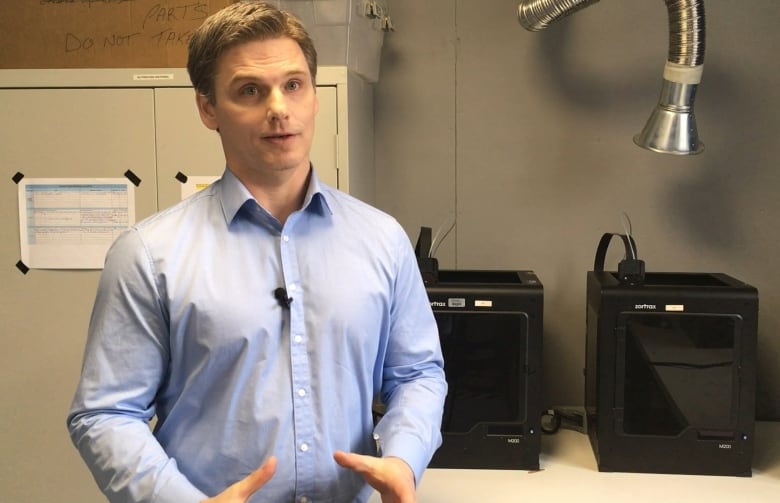Clarenville camera maker going deep with summer Titanic expedition
SubC Imaging part of summer expedition to shipwreck site

A Clarenville company is going deep — to the bottom of the Atlantic Ocean — with camera technology built and designed in Newfoundland and Labrador.
SubC Imaging will supply two cameras for a summer expedition to the Titanic shipwreck, as part of a partnership with U.S.-based OceanGate Inc.
The cameras will be installed on a new, five-person submersible, and will record high-definition videos and pictures during the six-week expedition. The material will be sent to shore and will eventually be used to build a 3D model of the famous ship.

"That's the [kind of job] that kind of gets you excited, makes you want to get the equipment out the door and make sure it's working well," said Ron Collier, one of the three co-founders of the eight-year-old company.
"Seeing the end result, which will be fantastic footage of the Titanic that no one's ever gotten before, and we can look at that and say, 'Wow, that's us.'"
Brand new product
One of the cameras that SubC will supply is its new Rayfin product, an advanced underwater camera that SubC designed in-house, "completely from scratch."
The device, featuring a titanium body and a sapphire lens, was launched last year, according to Chad Collett, the chief technology officer at SubC Imaging.
"We don't get block cameras from Sony or Canon and just put them in housings and make a good interface to them," said Collett.
"We've designed all the electronics … we're able to achieve a level of flexibility and customization that is not common in an underwater camera."

The camera's titanium housing is designed and manufactured in Newfoundland and Nova Scotia. The electronic boards are also designed by SubC staff, ordered from Europe and soldered in the company's Clarenville location.
Collett said about 12 people from the company have been working on the Rayfin camera for more than a year.
"[Your] cellphone is designed to be used in your hand. This camera is designed to be six kilometres underwater, remotely controlled from a computer, on a long cable … the complexity is far, far higher."
SubC's client base includes oil companies and ocean researchers, and according to Collier, its technology has been a part of headline-grabbing expeditions in the past, such as an expedition in 2012 looking for wreckage from Amelia Earhart's lost aircraft
"Titanic is still one of those iconic shipwrecks that everybody knows about around the world, even younger people, even though it's well over 100 years old," said Collier.
"It's a very exciting opportunity," added Collett. "The drive and motivation is not quite there to make things for oil and gas. It's the marine research and the biology and the shipwrecks and other things like that that really drive development and get people out of the bed in the morning."

Cashing in
The Titanic expedition, featuring OceanGate's Cyclops 2 submarine, will be the first to use a manned submarine since 2005, according to organizers.
OceanGate is selling seats on the expedition for about $140,000 per person.
The partnership between OceanGate and SubC won't see the Clarenville company turn significant profits from the Titanic trip, according to Collier, but it is a chance to showcase a product.
"I think we're pretty much well known around the world in our particular markets," he said. "This certainly helps lend some more credibility to that, and it just increases our exposure."
With the Titanic wreck falling apart, there is some urgency.
"It's estimated that within about 15 to 20 years, there may be pretty much nothing left," said Collier. "So this is a pretty important expedition."

Collier said that SubC — with its staff of about 25 in Clarenville and St. John's — is proof that local companies can perform on the world stage.
SubC's main competitors are located in the United States, in Norway and in the United Kingdom.
"I've really discovered over the years that Newfoundland and Labrador takes a backseat to no one in terms of the technology we're capable of developing. And I think we're actually just starting to realize that ourselves," he said.
"We've made our living from the fishery for hundreds of years … so this makes perfect sense that we would be the developers of our types of technology and ocean technology in the province which is obviously surrounded by water."

